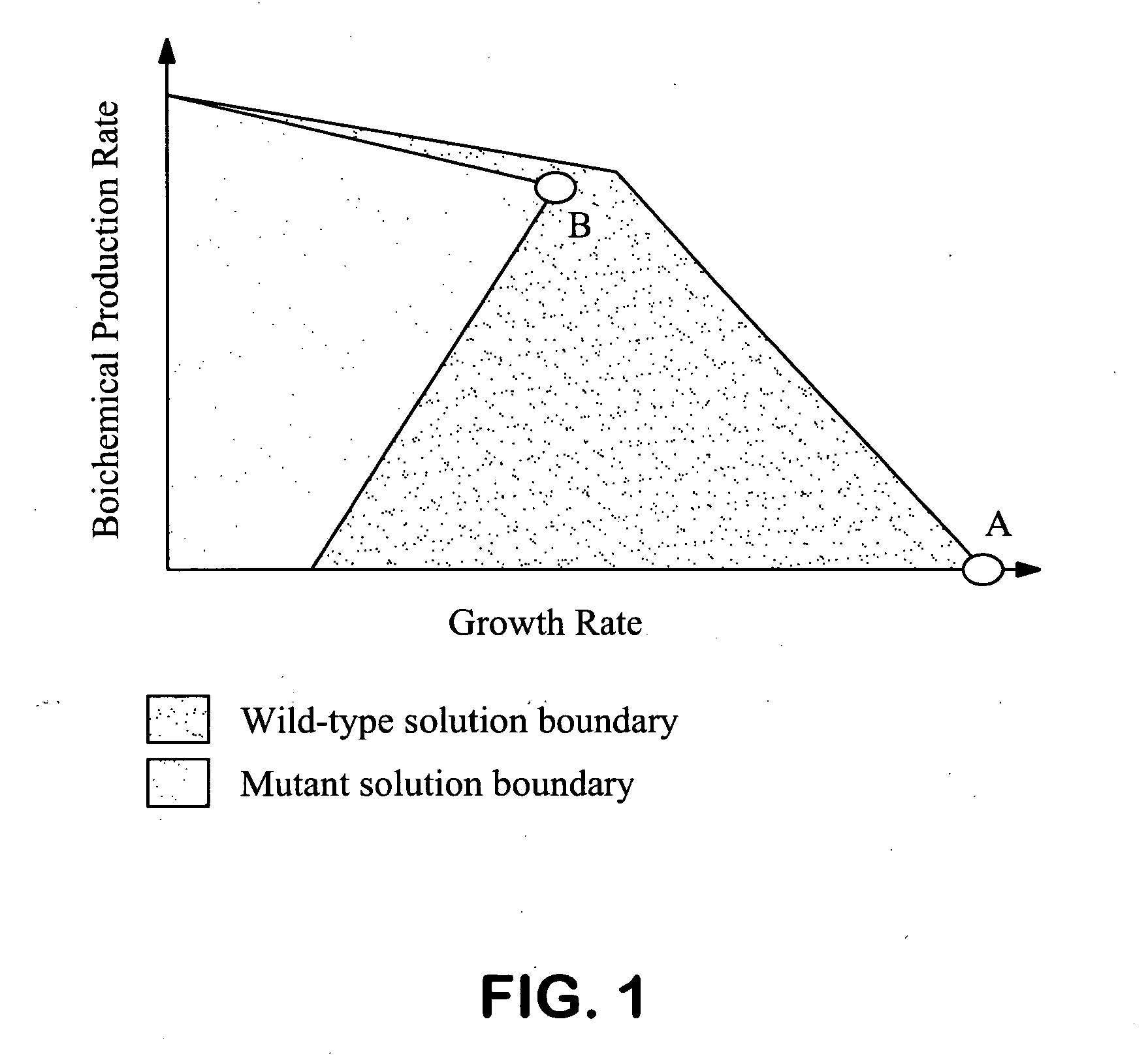Methods and organisms for the growth-coupled production of succinate
a growth-coupled and succinate technology, applied in the field of organisms for the can solve the problems of general instability of the stains produced by the above methods in the commercial fermentation process, hinder the applicability of the above methods in commercial settings, etc., and achieve the effects of stable growth-coupled production of succinate, and stable growth-coupled production
- Summary
- Abstract
- Description
- Claims
- Application Information
AI Technical Summary
Benefits of technology
Problems solved by technology
Method used
Image
Examples
example i
[0102] Microorganisms Having Growth-coupled Production of Succinate
[0103] In this Example, the metabolic engineering strategies identified by the methods described previously are described. Overall, more than one hundred strategies were identified. A detailed listing of the identified metabolic alterations leading to growth-coupled succinate production can be found in Tables 1-3 below (following the Examples), which describe the reaction deletion combinations identified by OptKnock (Table 1), the stoichiometry and genes corresponding to each reaction mentioned in Table 1 (Table 2), and the list of metabolite names corresponding to their abbreviations in Table 2 (Table 3). Particularly useful designs for the purpose of demonstrating the methods described herein were placed into three categories: (1) intuitive designs (low risk), (2) non-intuitive aerobic design (medium risk), (3) non-intuitive anaerobic design (higher risk). Depending on the strategy, either aerobic or anaerobic con...
example ii
[0142] Microorganisms Having Growth-coupled Production of Succinate
[0143] This Example describes the construction and performance of two in silico designed strains described in Example I for the growth-coupled production of succinate.
[0144] Described below are the methods used to construct and characterize organisms containing two of the previously described strain designs. Briefly, one strain, termed AB3, included deletions in adhE, pflA, and ldhA, while the second strain, termed AB4, included deletions in ackA-pta, dhaKLM, ptsG, pykA, and pykF, both described previously.
[0145] Strain Characterization Pre-Evolution
[0146] The first design involved the simultaneous removal of pfl, ldh, and adhE. The theoretical production limits for the proposed pfl, ldh, adhE triple mutant, obtained by separately maximizing and minimizing the succinate yield at every feasible growth rate, are compared to those of the wild-type strain in FIG. 3. The regions encompassed by the green and black line...
PUM
| Property | Measurement | Unit |
|---|---|---|
| Mass | aaaaa | aaaaa |
| Mass | aaaaa | aaaaa |
| Molar density | aaaaa | aaaaa |
Abstract
Description
Claims
Application Information
 Login to View More
Login to View More - R&D
- Intellectual Property
- Life Sciences
- Materials
- Tech Scout
- Unparalleled Data Quality
- Higher Quality Content
- 60% Fewer Hallucinations
Browse by: Latest US Patents, China's latest patents, Technical Efficacy Thesaurus, Application Domain, Technology Topic, Popular Technical Reports.
© 2025 PatSnap. All rights reserved.Legal|Privacy policy|Modern Slavery Act Transparency Statement|Sitemap|About US| Contact US: help@patsnap.com



